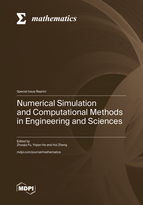A Multi-View Ensemble Width-Depth Neural Network for Short-Term Wind Power Forecasting
Round 1
Reviewer 1 Report
The paper proposes a multi view ensemble width-depth neural network for short-term wind power forecasting, based on local and global learning network. Although the paper is very interesting topic, the paper shows several weaknesses related to novelty of proposed techniques, probably because of the bibliographic review. The bibliographic review is not enough, several references used approaches based on multi-view neural networks, for example: https://doi.org/10.1109/TPWRS.2020.3042389
Additionally the techniques proposed in comparison should have the same nature of the proposed technique. Additionally, these proposed techniques should show which information is finally part of the model. All models should work with the same information in order to compare the results in the same scale.
Author Response
Please see the attachment.
Author Response File: ![]() Author Response.docx
Author Response.docx
Reviewer 2 Report
In this paper, the Authors carried out a very interesting study on wind power forecasting by using neural network.
I found the paper very interesting, very well detailed on the state of the art and, maybe also a little bit heavy, forecasting model explanation.
I think that currently the weakness of the work is the results explanation; in fact, the Authors reported different analysis (tables and figures) but the explanation and arguments are lacking or not incisive. I think that the Authors should improved this part by expanding the results section and reporting more detailed discussion as done in previous sections.
For instance, the Authors should be described more in deep the results shown in table 1, what does it imply that “NRMSE ours” is 0.2103 for WF1 while the “NRMSE of IVMD-SE-MCC-LSTM” is 0.2547? the same for the other metrics and other datasets? Please give more detail.
Figures 5, 6 and 7 are very incisive but poor discussed, please give more explanation of them
I also suggest clarifying the implications or the future application of this work.
Best Regards
Author Response
Please see the attachment.
Author Response File: ![]() Author Response.docx
Author Response.docx
Reviewer 3 Report
The abstract and introduction motivate the problem that is investigated and relate it to existing work. It is nice that the contribution of this paper is set out clearly from the start. The conclusion section should perhaps revisit the contributions.
In the introduction, only DBN and BLS explained briefly, with no reference to validate claims about their limitations (lines 52-63), perhaps you should add some relevant information here.
Conclusions mention further work will attempt to reduce computational cost. What is the current computational cost of the method proposed?
Author Response
Please see the attachment.
Author Response File: ![]() Author Response.docx
Author Response.docx
Round 2
Reviewer 1 Report
The authors correctly filled in all the comments. Congratulations.Reviewer 2 Report
The Authors have taken into account all my suggestion and answered to all my comments.
I think that the paper can be accepted in the present form.
Best regards







